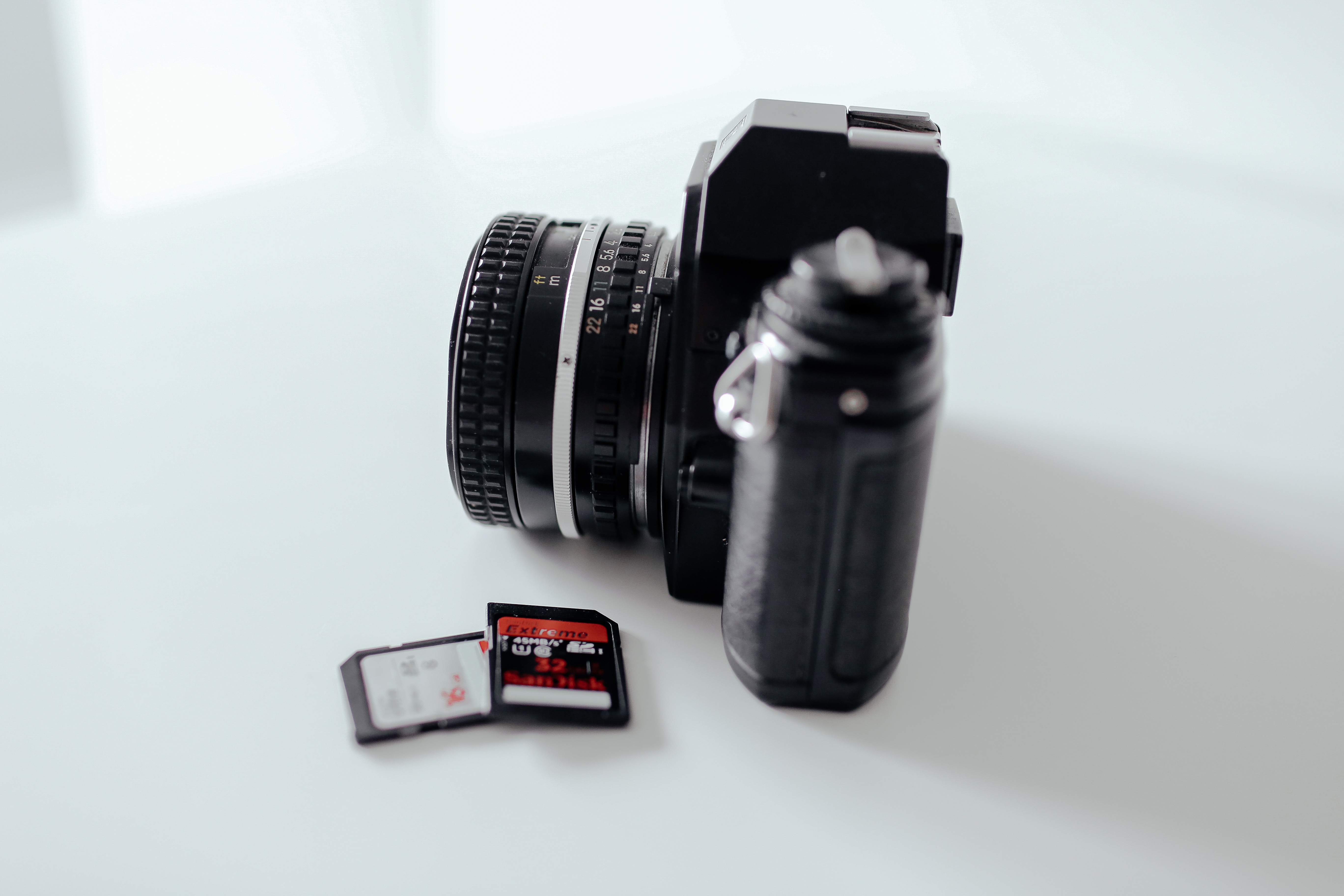
Today I’m going to run through my top 5 reasons why you should invest in a new SD card this year.
Whether you’re a full-time pro or a weekend warrior, trusting your image and video files to the right memory cards should be something you give careful thought to. Choosing the right SD card, and the right card management strategy, is something that could save you a lot of anguish on a future shoot day. I recently suffered the heartbreak of losing a tonne of work due to a hard drive failure, and it reminded me just how important it is to use to high quality memory cards and drives, and have the right backup strategy to ensure you don’t lose work that cannot be easily recreated.
1. Your old SD card may not be good for your new camera
If you’ve just invested in a brand new camera, and you’re planning to use an old SD card, it is definitely worth doing your research to make sure that old card is compatible with your new state-of-the-art camera. There’s not much having a blazing burst mode that can shoot 60 frames per second, like the Olympus OM-D E-M1 Mark III, if your card can’t keep up. Similarly, if your camera can shoot 4K video at 120fps in 10bit color, like the Sony A7S III, then you’ll need a card that can do it justice.
2. Newer cards have higher write speeds
There are a couple of limiting factors when it comes to SD card performance. I’m sure you’re familiar with the concept of capacity, the amount of data storage available on the card (typically measured in gigabytes). But it’s also important to keep the write speed in mind; the rate at which your camera can transfer data to the card. There are actually two sides to this coin, one being the maximum rate at which the camera can write the data, the other being the rate at which the card can accept data.
Camera manuals don’t often talk about write speeds, so it’s left up to us to figure out the write speed of the card and decide if it’s adequate. There are a number of different ways the card speed is presented, the most straightforward being in megabits per second (Mb/s). Most cards are between 80Mb/s and 100Mb/s, but you can also get card with 300 Mb/s. Otherwise keep an eye out for the ’10’ symbol which indicates it’s a class 10 card, and adequately fast for most purposes.
Learn more: Why photographers need fast memory cards
3. Don’t keep all your images on one card
It’s important to give some thought to your card management strategy, especially if you’re planning to shoot weddings, where there is a serious responsibility on your shoulders to deliver those all-important images that the bride and groom will cherish for years to come. Many photographers recommend using a number of cards with less memory capacity rather than one high capacity card, because if that card should fail, it’s a big headache, so why not just buy a number of smaller cards instead?
Also, this will encourage you to adopt one of the most important card management strategies there is: download and backup your images immediately after every shoot. This policy acts as insurance not just against card failure, but also against a lost or stolen camera.
Dual card slots are becoming a more common feature on mirrorless cameras, and this allows us to backup our images immediately. So if you do decide to use a very high capacity card, you might consider buying two and using the second to backup the first.

4. Shooting hi-res video
As I mentioned earlier, many cameras nowadays shoot very high quality 4k video, and they often shoot at high frame rates too, like 120fps or higher, which allow you to create awesome slo-mos. These shooting modes produce a lot of data however, and you can very quickly chew through an entire memory card if you’re not careful.
This is where you need to strike a balance between choosing multiple lower capacity cards, as per #3 above, and choosing a card with enough memory to let you get lots of great video. So think about what it is that you love to shoot and how that plays into your decision. If 4k and high frame rate video isn’t your jam, then perhaps you’ll do fine with two 128GB Lexar Professional cards.
5. Larger storage capacity
The rate at which memory card capacity has been growing has been pretty phenomenal in recent years. If you just want a super high capacity card, you could go with a SanDisk Extreme PRO 512GB card and back up your files about once a year, because that’s half a terrabyte on a tiny little card! Or you could just go the whole hog and get the SanDisk Extreme PRO 1TB card.
It’s not that long ago that I bought my first external drive with a whole terrabyte on it, and now we have an SD card that can store that much—that is mind-blowing to me! The advantage of choosing a high capacity card is that you are somewhat future-proofed for something like 8k or RAW video. Most video formats today (with the exception of some professional video cameras) are heavily compressed. It’s very difficult to crunch all of the information that the sensor can capture and write it to the memory card in real time, and so the camera down-samples the video to something manageable.
It’s similar to photography where you have RAW mode or JPEG mode. JPEG files are compressed versions of RAW files, where RAW files contain all of the available data and take up much more storage space as a result. The advantage of uncompressed RAW files is that you can tweak them much more in post-production. For example, if an image is very underexposed, it’s likely that you’ll be able to increase the levels to a point where it’s usable. With JPEGs you have a lot less leeway to fix an image after it’s shot.
Only buy from the best
If I’ve done a good job convincing you that an SD card upgrade is a smart move for you, then let me also encourage you to only buy cards from reputable companies and reputable sources. There are a lot of cheaply made cards out there that are not as reliable, and also a lot of fake cards. Stick with cards by the like of SanDisk, Lexar, Kingston, PNY or Seagate and you won’t go wrong. They offer great warranties, and in the case of SanDisk, recovery software in case the dreaded card failure occurs.
Check out the full range of SD cards available at BestBuy.ca!



